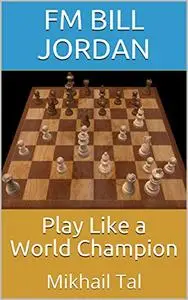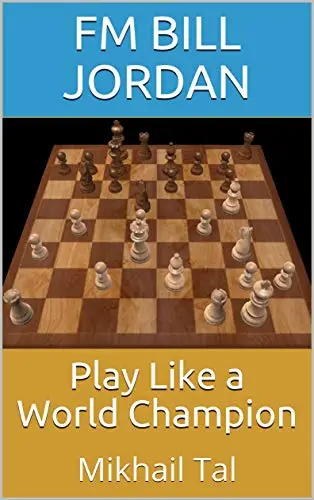Play Like a World Champion: Mikhail Tal by FM Bill Jordan
English | 2019 | ISBN: N/A | ASIN: B07RGBL3GL | 808 pages | EPUB | 4.62 Mb
English | 2019 | ISBN: N/A | ASIN: B07RGBL3GL | 808 pages | EPUB | 4.62 Mb
One of the joys of chess is improving your understanding and skill.
Another joy is to play through the games of masters. This book combines the two. You receive a rating
for each game you play through.
It uses a system developed by FIDE master Bill Jordan for coaching students. This is used in the books Rate Your Chess and Rate Your Chess 2.
Book Series
Here are all the world champions in this series.
- Steinitz
- Lasker
- Capablanca
- Alekhine
- Euwe
- Botvinnik
- Smyslov
- Tal
- Petrosian
- Spassky
- Fischer
- Karpov
- Kasparov
- Anand
- Kramnik
- Carlsen
Instructions
Playing through master games is a proven method of improving.
You will learn by simply playing over the games.
You will learn more by taking a more active role.
You take the winning side and guess the next move.
With a printed book this can be done by covering the moves with a sheet of cardboard. The sheet could be moved down one line at a time.
This book consists of games from World Championships in chronological order.
You do not need to guess the first 8-10 moves of the opening.
You are given up to 4 candidate moves to choose from.
The correct move is shown on the next page.
Note that Look Inside removes all page breaks.
In the complete book the page breaks will be there.
If you guess correctly you will score points which will range from 0 to 6. You can either write down or otherwise keep track of your total score and see what category you reach.
With practice you will correctly predict more moves. Doing so helps develop chess fluency. In other words, you improve your chess intuition or feel for the right move.
There are brief annotations for each move which describe the
idea behind why a move was played.
Sometimes a move is totally unexpected. Then it would be a good time to see if you could understand why the move was played. Every move should have a clear idea behind it. If you cannot see the idea, there is an opportunity to learn something.
There is between one and four choices. This is similar to a multiple choice exam. This is easier than looking at all possible moves and may mean you examine some interesting moves you would not have normally considered.
Rating
The score for each game will always be out of 100. Scores may vary from game to game so to get a consistent rating average your score over 10 games.
These are based on the FIDE (The international chess federation) rating system developed by Professor Elo.
The rating of 2500+ is an approximation of the strength needed to be a Grandmaster.
After you have finished a game, find what range your score is in the left column.
Your approximate rating is in the right column.
- 91-100 2500+
- 81-90 2400 - 2499
- 71-80 2200 - 2399
- 61-70 2000 - 2199
- 51-60 1800 - 1999
- 41-50 1600 - 1799
- 31-40 1400 - 1599
- 21-30 1200 - 1399
- 11-20 1000 - 1199
- 0 -10 below 1000
Diagrams
This book has many large clear diagrams. You do not need a chess set and board to read this book. You do need to know how to read standard chess notation.
Featured Player
This book features Mikhail Tal who became world chess champion in 1961 after defeating Mikhail Botvinnik. He lost the title in a rematch with Mikhail Botvinnik in 1963.
Tal was from the Soviet Union.
Tal was a great attacking and sacrificial player.
How many of his moves can you guess?



